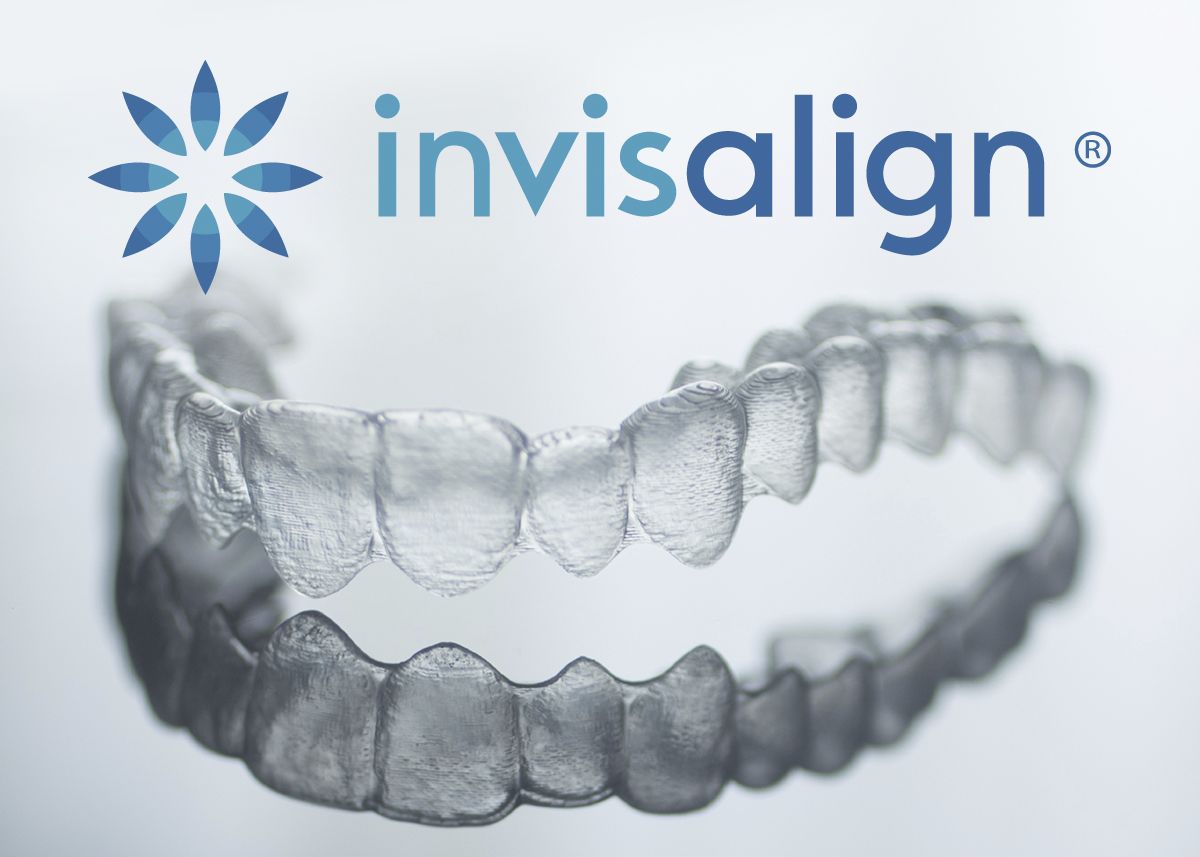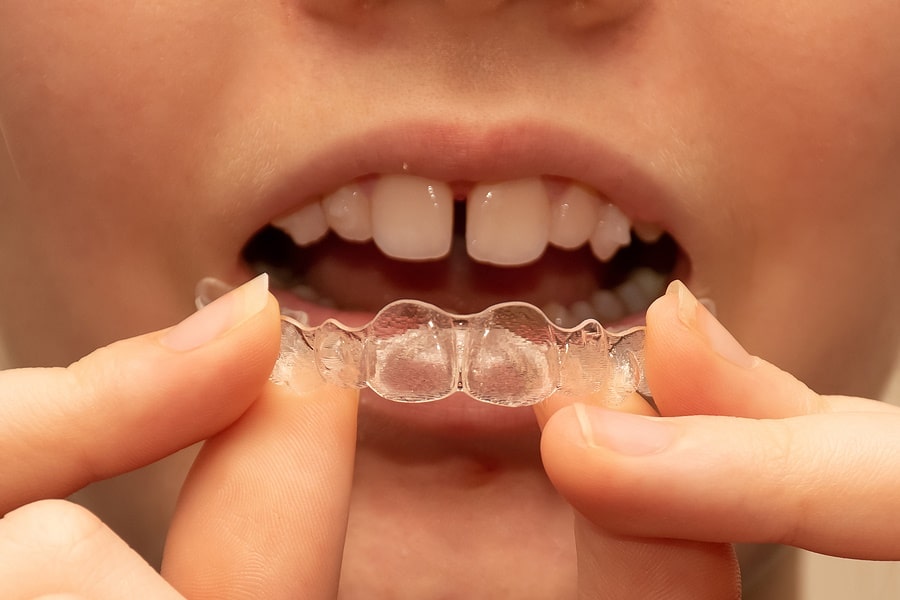Discover the Conveniences of Invisalign for a Perfect Smile Makeover
Discover the Conveniences of Invisalign for a Perfect Smile Makeover
Blog Article
Invisalign vs. Traditional Dental braces: Which Option Is Right for You?
When taking into consideration orthodontic therapy, the option in between Invisalign and traditional braces offers numerous vital variables that merit careful evaluation. Invisalign offers a discreet option with detachable aligners, while conventional braces provide a much more visible yet reliable option for extreme imbalance. Each alternative incorporates distinctive benefits and disadvantages connected to looks, convenience, therapy duration, and cost. Comprehending these subtleties is vital for making a notified decision that lines up with your individual choices and way of life. The inquiry remains: which alternative will ideal meet your orthodontic requirements and expectations?
Review of Treatment Options

On the other hand, typical braces include steel braces and wires that are adhered to the teeth. This approach uses continual pressure gradually to attain placement. While efficient for complicated orthodontic concerns, standard braces need routine visits for changes and can posture difficulties in maintaining oral hygiene as a result of the trouble of cleansing about brackets and wires.
Both choices have their advantages, and the selection commonly rests on details dental problems, way of life choices, and client compliance. Eventually, consulting an orthodontic professional is vital for figuring out one of the most appropriate therapy strategy customized to specific demands. Recognizing the nuances of each option can dramatically affect the total success of orthodontic treatment.
Aesthetic Factors To Consider
A substantial element affecting the selection between Invisalign and traditional braces is the aesthetic charm each therapy supplies. Invisalign aligners are crafted from clear plastic, making them essentially invisible when used.
On the other hand, standard dental braces include metal braces and cords, which can be much more recognizable. While innovations in orthodontic technology have caused the growth of smaller sized braces and tinted elastics, typical dental braces still maintain a more noticeable profile. For some people, the exposure of dental braces might hinder them from looking for needed therapy.
Ultimately, the choice between Invisalign and conventional dental braces might pivot on personal choices concerning looks. People who focus on discernment commonly lean towards Invisalign, while those that are much less worried regarding exposure may select traditional dental braces. Understanding the visual implications of each alternative is essential for making an informed decision that lines up with one's way of living and preferences.
Convenience and Convenience

In terms of convenience, Invisalign aligners are detachable, making it possible for people to appreciate their favorite foods without restriction and maintain optimal dental hygiene. Cleaning and flossing are simplified, as the aligners can be obtained during these routines, whereas standard dental braces call for careful maneuvering around braces and cords.
In comparison, conventional dental braces necessitate normal changes, making them much less hassle-free for those with hectic timetables. Overall, the convenience and convenience of Invisalign make it an appealing selection for lots of people looking for orthodontic therapy.
Therapy Period and Efficiency
While both Invisalign and conventional braces work in remedying dental imbalances, the duration of treatment can vary dramatically between the two choices. Generally, Invisalign treatment can take anywhere from 12 to 18 months, depending on the complexity of the case. The clear aligners function by progressively moving teeth into their desired settings, and normal follow-ups with an orthodontist aid ensure progression stays on the right track.
On the other hand, conventional braces commonly call for a longer commitment, usually varying from 18 months to 3 years. This is because of their fixed nature and using cords and brackets, which can be more efficient for complex situations and severe imbalances (Invisalign). The treatment performance of traditional braces is well-documented, as they enable exact adjustments and greater control over tooth activity
Eventually, the selection in between Invisalign and standard braces may depend upon both the expected treatment duration and the particular oral problems at hand. Consulting with an orthodontist is crucial, as they can provide customized referrals based on individual needs, making certain the picked approach aligns with desired durations and results.
Cost Comparison and Insurance Alternatives
Expense plays a substantial duty in the decision-making process for people thinking about orthodontic treatment, whether selecting Invisalign or traditional dental braces. Typically, the cost of Invisalign arrays from $3,000 to $8,000, while typical dental braces usually cost between $2,000 and $6,000. Elements affecting these expenses include the complexity of the instance, the duration of therapy, and geographical location.
Insurance policy protection can substantially impact out-of-pocket costs. Several oral insurance coverage strategies supply partial protection for orthodontic therapies, but the specifics can differ commonly. It is important for individuals to evaluate their insurance policy plans to figure out the extent of coverage for either choice. Typically, conventional dental braces may be much more often covered by insurance plans compared to Invisalign, which some insurance companies categorize as an aesthetic treatment.
In addition, a number of orthodontic practices supply adaptable repayment strategies, making both treatment alternatives extra available. People need to inquire concerning prospective financing alternatives and price cuts for upfront settlements. Evaluating the total expense, including insurance advantages and layaway plan, is important for making a notified decision that aligns with both aesthetic preferences and budget considerations.

Final Thought
In summary, the selection between Invisalign and conventional dental braces depends upon several aspects, consisting you can find out more of visual preferences, convenience, treatment period, and expense. Invisalign supplies a very discreet, removable option that facilitates oral hygiene and nutritional flexibility, while traditional braces might be much more appropriate for complex dental issues and often come at a reduced rate factor. Eventually, consultation with an orthodontist is necessary to examine specific situations pop over to this site and identify the most appropriate therapy option for attaining ideal oral positioning.
When taking into consideration orthodontic treatment, the selection in between Invisalign and standard braces offers a number of crucial elements that warrant careful analysis.Contrasting Invisalign and typical dental braces discloses distinct treatment alternatives for orthodontic modification.While both Invisalign and traditional dental braces are efficient in remedying dental imbalances, the period of treatment can vary significantly moved here between the 2 choices.Price plays a substantial role in the decision-making procedure for people thinking about orthodontic therapy, whether deciding for Invisalign or conventional braces.In recap, the option between Invisalign and traditional braces hinges on multiple elements, including aesthetic preferences, comfort, treatment duration, and cost.
Report this page